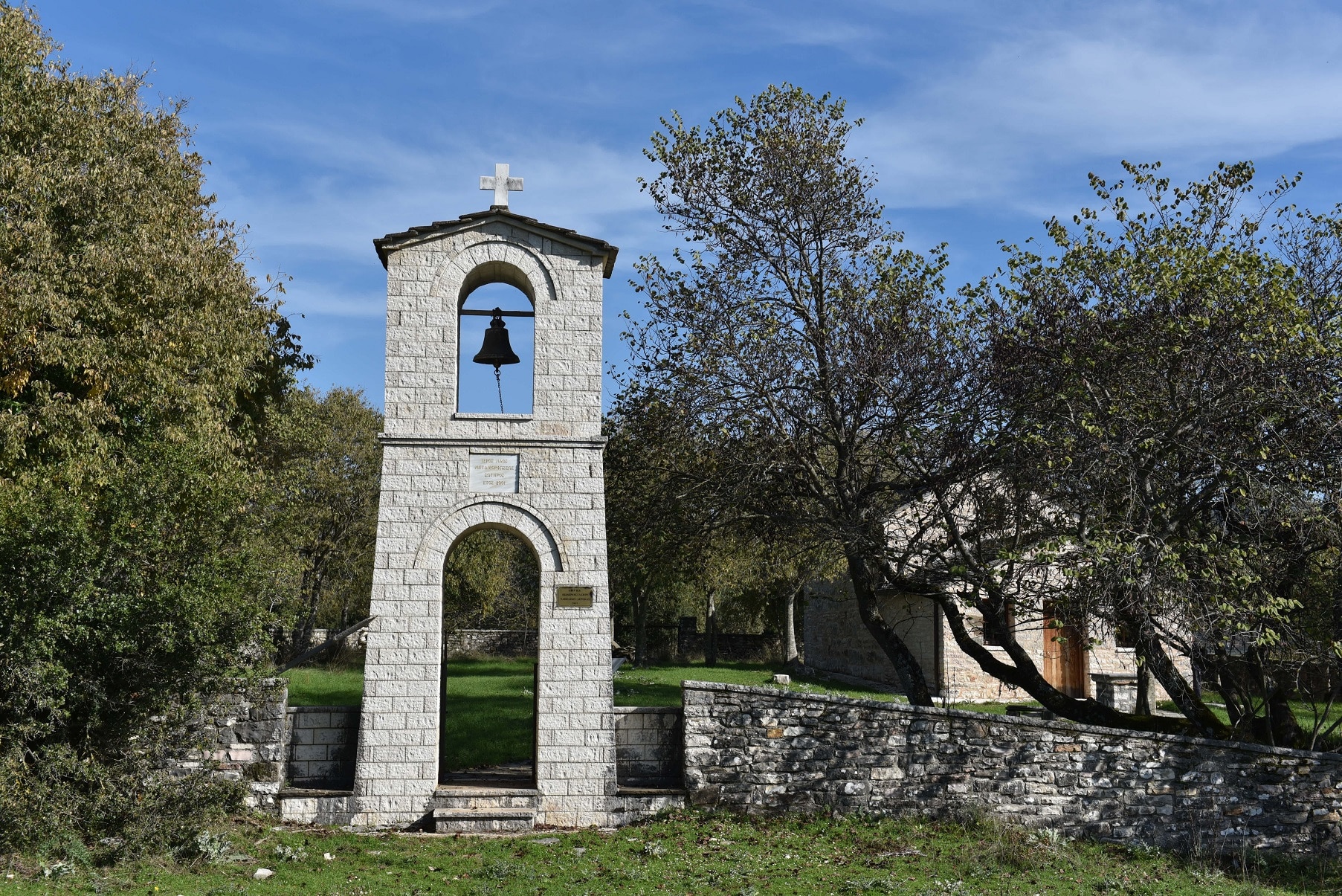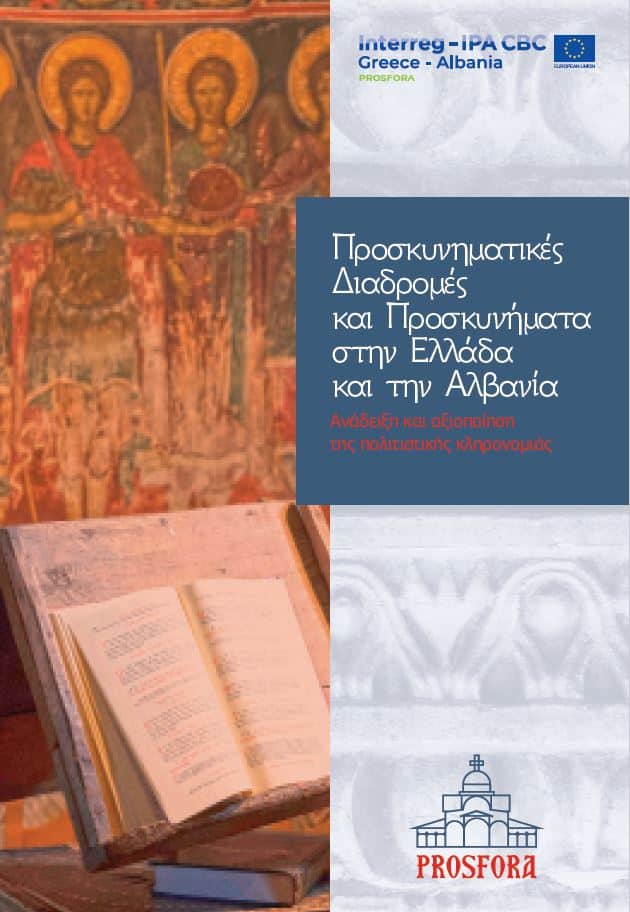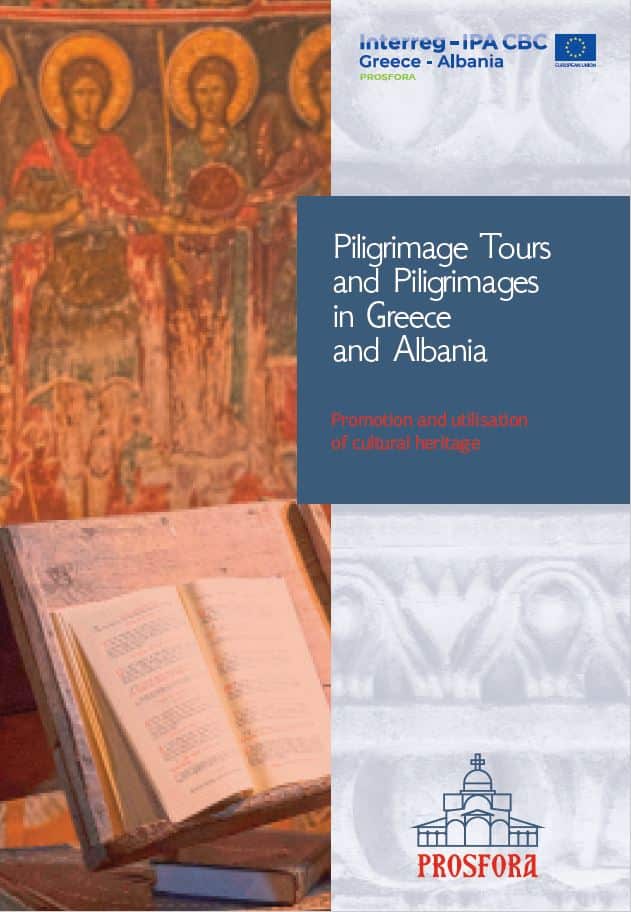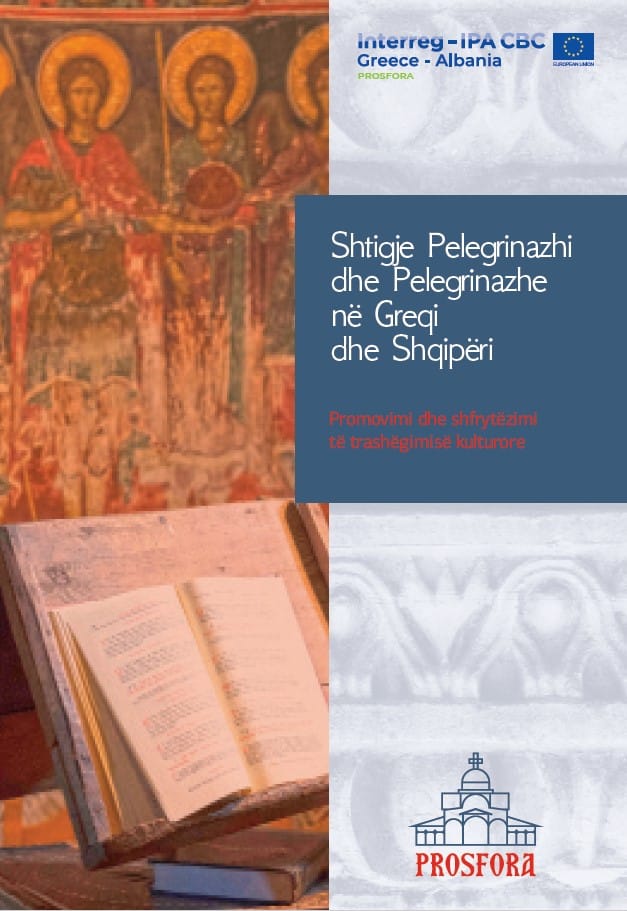The School of NW Greece or Local Continental School or School of Thebes, from the place of origin of its three famous painters, Frangos Katelanos and the brothers Frangos and Georgios Kontaris, is together with the Cretan School the two great schools of painting of the 16th century.
The School creates its first masterpiece at the Monastery of the Philanthropists. That this happens in Ioannina is not accidental, since the former capital of the Despotate of Epirus had a tradition of art, social and economic status, favorable treatment by the conqueror, while members of prominent Giannioti families, during the 16th century, establish or renovate monasteries on the Island and in Meteora, entrusting their decoration to the painters of the Local Continental School.
The Monastery of the Philanthropists is followed by a series of seventeen more well-known sets of frescoes in fourteen monasteries and temples until the end of the 16th century. In Epirus there are eight (Monasteries of the Philanthropists, Dilios and Eleousa on the Island, temples of Agios Nikolaos in Krapsi, Agios Dimitrios and Metamorphosis in Klimatia), ten in Aetolia (Monastery of Myrtia), in Thessaly (Monastery of Varlaam in Meteora) church of Rasiotissa in Kastoria, Monasteries of Megisti Lavra on Mount Athos and Zavorda in Grevena), Evia (church of Paleopanagia in Steni, Monastery of Galataki in Limni) and Boeotia (Monastery of Saint Meletios). The scattering of the decorations, apart from Epirus, in an extensive area of central and northern Greece is remarkable, while the geographical extent of the works proves on the one hand the prestige of the School and its representatives and on the other interprets the wide spread of its ideas. to the Peloponnese and the Balkans, and in fact in the following, already formed in the late 16th c. generations of painters.
Of the eighteen decorations in total, the twelve are exactly dated with inscriptions from 1539, in the Monastery of Myrtia, to 1592/93 or 1595/96, frescoes of the dome in the Monastery of Zavorda and give valuable information about the patrons and accomplices and some for the duration of the work. However, only four, also in the second half of the 16th century, cite the name of the painter: of the Theban Frangos Katellanos in the chapel of Agios Nikolaos in the katholikon of the Lavra Monastery in 1560, of the Thebans, also brothers Georgios and Frangos Kontaris Agios Nikolaos Krapsis in 1563 and in the simple in the catholic of the Monastery of Barlaam in 1566 and only of Frangos in the Transfiguration of Klimatia in 1568, while the other artists remain anonymous.
The three renowned Theban painters, and especially Frangos Katelanos, gave the School a remarkable presence and extent, to the point that it was, in the 16th century, the most important painting movement in mainland Greece against the Cretan School. They probably came to Epirus as established painters, who were assigned a specific task and acclimatized, adapting their art to the local data and offering new elements, which strengthened and expanded the local painting.
Frangos Katelanos certainly decorated the katholikon of the Lavra Monastery in 1560 on Mount Athos, however, already in 1542, in the second painting phase of the Monastery of the Philanthropists, the elements that are characteristic of his art appear. He is certainly the most important personality and holds the position of Head of the School. He is selected based on his abilities and the fame that his entry to Mount Athos and the recognition of his work gave him, next to Theophanes in the katholikon of the Lavra Monastery. He was an established and widely known hagiographer in his time and the art he represented had the acceptance and appreciation of ecclesiastical circles, an art already solid and crystallized, so that not only does not receive substantial influences from modern Cretan, but also to withstand in comparison with it.
The very capable brothers Frangos and Georgios Kontari, in addition to their signed works, have almost certainly attributed the story of part of the austere and the paranarthikes of the Monastery of the Philanthropists, probably in 1560, as well as the fresco decoration of the church of Agios Dimis (15 -1560), the austere of Saint Meletios in Kithairon, the catholic of the Monastery of Agios Nikolaos in Lake Evia (Galataki Monastery), the first painting phase of the catholic of the Monastery of Eleousa on the Island of Ioannina, as well as the decoration of a series of unsigned , which are kept in poor condition and located in the area of their birthplace.
However, apart from the famous painters, another group of their colleagues belongs to the same School, since in their work are presented many of the iconographic and stylistic elements, which seem to consistently characterize the art of the School. These painters are the anonymous artist of Rassiotissa, the muralist of the Monastery of Saint Nicanor and the painters of the two phases of the painting decoration of the main church of the Monastery of the Philanthropists, whose art in iconography and in its expressive ways seems to be closely related to work of the painter of the Monastery of Dili and Katelanos.
The School of NW Greece continues the tradition of painting of the Paleolithic years, uses iconography with obvious relationships and dependencies on the iconography of Mystras, but also on the iconography of northern Helladia and the Balkans, but also receives influences from Western painting. The difference with the Cretan School is that its art as a whole is more complex in the means of expression and more multifaceted in its iconographic composition, emphasizing the dramatic element of the story and treating the forms with an anti-classical conception.
The fixed features of the School’s works from the original decoration of the Monastery of the Philanthropists to the frescoes of the Transfiguration of the Vine are the multitude of faces, the dense architectures and the successive mountains with the fragmented levels, which fill the space of the image, while the movement is characteristic. , the intensity, the dramatic element, as well as the thorough, detailed narration of the events with realism and with the corresponding emotional climate, in which they evolve or which they create. The obvious tendency for realism in the depiction of events, as well as the representation of figures with directness in expression, should probably be connected with the anti-classical momentum of Byzantine art, especially evident in paintings of the second half of the 15th century, which are created mainly in northwestern Greece and the Balkans.
Very often the multi-faceted performances, with the rich episodes that thicken and unify the narrative, of which those of the Passion have the main place in the Christological circle, have a portable image size and plastic texture, courtesy and subtlety of forms. Although the compositions are multi-faceted and turbulent, their structure and setting are governed by a studied system, while the individual elements are also subordinated to ordered geometric shapes, which tame the performance and create a well-balanced balance.
Bibliography:
Achimastou-Potamianou M., “Issues of monumental painting of the 16th c. The local
continental school “, DHAE 16 (1991-1992), Period D. In memory of André Grabar
(1896-1990), Athens 1992, pp. 13-32.
Achimastou-Potamianou M., The Monastery of the Philanthropists and the first phase of the post-Byzantine
painting, Athens 1995.
Liva-Xanthaki Th., The frescoes of the Monastery of Diliou, Ioannina 1980.
Post-Byzantine Monuments of Klimatia, Ministry of Culture and Sports-8th Ephorate
Byzantine Antiquities, edited by V. Papadopoulou, Ioannina 2014.
Hatzidakis M., “The painter Frangos Kontaris (p. 114)”, DHAE 5 (1969), Period D. In
memory of Dimitrios Evangelidis (1888-1959), Athens 1969, pp. 299-302.
Hatzidakis M., Greek Painters after the Fall (1450-1830), vol. 1, Athens 1987.











